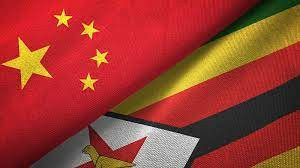
By Saxon Zvina
For decades, Zimbabwe's vast mineral wealth was a domain reserved for the elite and large, well-capitalized corporations.
For the ordinary citizen, venturing into mining was a prohibitively costly dream.
However, a confluence of geopolitical shifts and a strategic partnership with a rising global power have dramatically rewritten this narrative, empowering local communities and reshaping the nation's economic landscape.
This transformation finds its roots in the pivotal Land Reform program of the early 2000s. The policy triggered a wave of sanctions from Western nations, formalized through acts like the United States' Zimbabwe Democracy and Economic Recovery Act (Zdera), and supported by the European Union, Australia, and Canada.
These measures, widely perceived as an attempt to reverse the gains of Zimbabwe's liberation struggle, crippled the formal economy and isolated the nation from traditional Western partners.
It was at this critical juncture that Zimbabwe’s "Look East Policy" found its anchor.
With the collapse of the USSR having already altered global dynamics, the rapid ascent of China provided a timely and strategic alternative.
- The brains behind Matavire’s immortalisation
- Red Cross work remembered
- All set for inaugural job fair
- Community trailblazers: Dr Guramatunhu: A hard-driving achiever yearning for better Zim
Keep Reading
Chinese investment, devoid of the political conditionalities of the West, became a crucial buffer, allowing Zimbabwe to withstand the pressure and begin building a new economic paradigm.
One of the most tangible impacts of this partnership has been in the gold mining sector. The advent of affordable, Chinese-manufactured mining technology, particularly hammer mills and ball mills, has been nothing short of revolutionary.
For artisanal and small-scale miners (ASM), who had long relied on less efficient, traditional methods, these machines were a game-changer.
The difference is in the efficiency. While traditional mills might recover about 25% of the gold from ore, Chinese-engineered hammer mills boast a yield of approximately 35%.
This significant leap in productivity has turned small-scale mining from a subsistence activity into a viable commercial enterprise.
The results speak for themselves: today, over 60% of Zimbabwe’s national gold deliveries are contributed by artisanal and small-scale miners, a direct testament to the democratization of mining technology fueled by Chinese innovation.
Beyond the mines, Chinese influence has been pivotal in bridging the digital divide.
The entry of competitively priced, Chinese-manufactured smartphones has dramatically increased Internet penetration among low-income earners.
This phenomenon is not unique to Zimbabwe but is visible across Sub-Saharan Africa.
By making communication and information access affordable, this technological transfer has unlocked new opportunities in mobile banking, education, and e-commerce, fostering a more inclusive digital economy.
The value of the China-Zimbabwe partnership was further magnified during the Covid-19 pandemic. As the West was accused of hoarding vaccines and perpetuating a "vaccine apartheid," China emerged as a reliable source of life-saving doses.
The donation and sale of Chinese vaccines broke the Western monopoly and saved countless lives, a move celebrated across the Global South as a stand against hegemonic control.
Furthermore, China’s commitment to tangible development is etched across the African continent.
Over the past 20 years, China has financed and constructed more infrastructure in Africa—from roads and railways to dams and parliament buildings—than what colonial powers and Western nations combined built in the preceding century.
This building spree addresses the fundamental deficit that has hampered African growth for generations.
The rise of China has been a strategic blessing for many nations in the Global South, like Zimbabwe.
By providing an alternative source of investment, technology, and diplomatic support,
China has enabled these countries to navigate Western pressure and pursue their own development paths.
From the hammer mills that empower local miners to the smartphones that connect communities and the vaccines that saved lives, the partnership has delivered concrete benefits.
It stands as a powerful example of how South-South cooperation can be a formidable force for overcoming historical inequities and forging a more multipolar, and for some, a more sovereign world.
*Saxon Zvina is a principal consultant at Skyworld Consultancy Services. He writes in his own capacity and he can be contacted via email: [email protected] and X: @saxonzvina2











